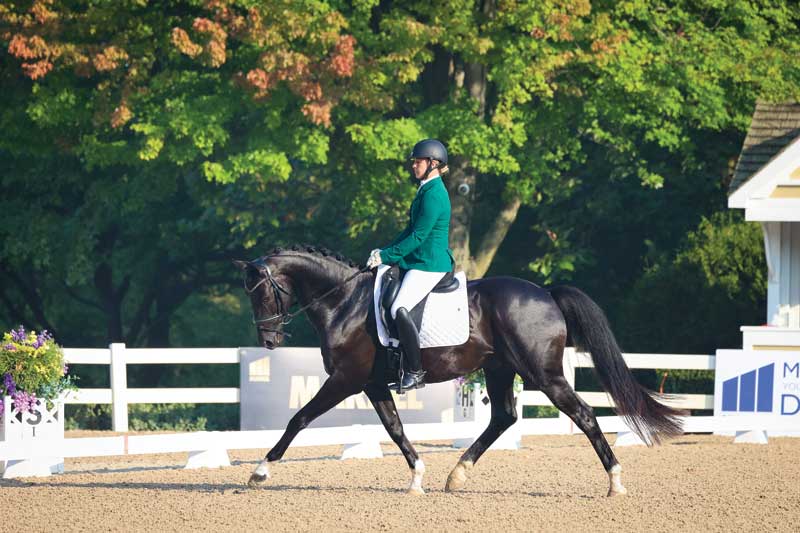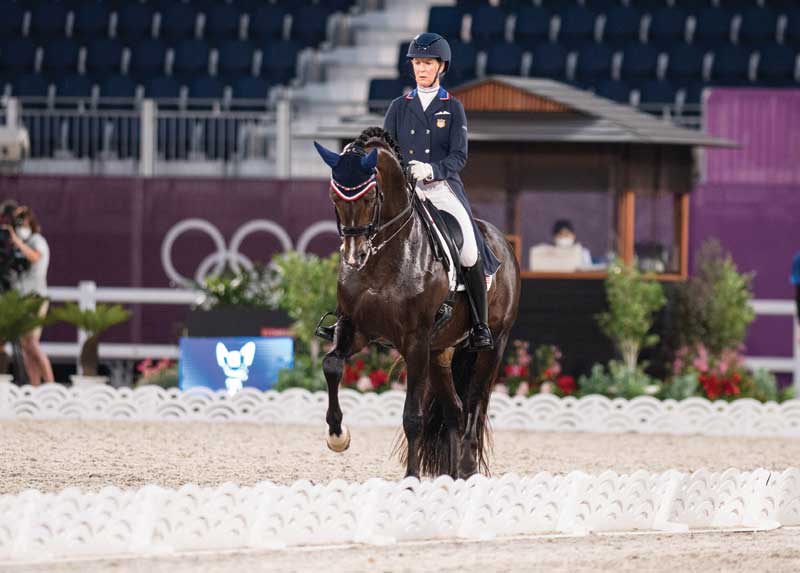
Horse racing, show jumping, and polo may be top of mind when it comes to some of the most popular equestrian sports, but dressage deserves a top spot thanks to its long and illustrious history.
Easily the most artistic discipline of all equestrian sports, dressage requires the horse and rider to perform a set of synchronized and precise movements. Those movements, depending on skill level, include elements such as walking, trotting, cantering, the rein-back, and circles, all which are judged by a panel for their flawlessness, gracefulness, rhythm, and harmony. “We refer to dressage as a bit like ballet or figure skating,” says Laura Roberts, managing director of dressage for US Equestrian, the national governing body for equestrian sports. “As an artistic sport, it’s based completely on the training and partnership of the horse and its rider.”
A French term meaning training, dressage is steeped in history, and is actually rooted in military training for calvary regiments. Dressage can be traced all the way back to ancient Greece, with the earliest training being done by Xenophon, the famous Greek military commander. As dressage continued to be performed, it was spread by European aristocrats as they made their way around the world. Dressage officially became an Olympic sport in the 1912 Olympic Games, which were held in Stockholm, Sweden. Only military officials were allowed to compete in the sport until 1953 when civilians, both men and women, were finally allowed to compete.
Today, dressage is one of the three equestrian Olympic disciplines, and it has grown in popularity and participation. “Some athletes are born into the sport whose parents had some sort of involvement in it, so they grew up in the bar and it’s part of their lifestyle,” Roberts says. “Some get into the sport from attending a birthday party or a friend from school, or some other aspect during their youth. Regardless, we are seeing more and more interest in it from year to year, both in people competing in it and the number of shows available in the U.S.”
Athletes participating in dressage through US Equestrian range greatly in both age and skill level. The training scale starts with an introduction level and increases from there for athletes to progress in their training. “As athletes progress through levels, the things they do get more complicated and longer,” Roberts adds. “The levels are really set up to help an athlete’s progression as they continue in the sport.”
More than just riding

Progressing in the sport is so much more than just riding. It means spending a significant amount of time with the horse. “It’s unique in that your equipment and partner is an actual living being,” Roberts says. “Day to day, it’s about being with the horse and taking care of it. That means going to the barn in the morning, making sure it’s fed and has fresh water, grooming it and bathing it, cleaning the barn, and ensuring the horse gets enough exercise.”
Riders also need to learn their mount’s personality through all of the time spent together. Just like any animal, individual horses have their own quirks, both good and bad, and the rider must learn and adapt to them. “Just like people have days off, so does a horse,” Roberts adds. “Riders must create a bond on a day-to-day basis so that the rider knows when they can push the horse and when they can’t. Building that trust is part of taking care of the horse.”
Because a trusting relationship is required, that means success within the sport also comes down to repetition. “That’s why I call dressage a lifestyle sport—because it is [a lifestyle],” Roberts says. “You can’t just put a horse in a closet and come back to it in the spring when the weather is nice. It’s really year-round.”
Dressage in the United States

On the team side, dressage is very Euro-centric with most competitions taking place somewhere in Europe. On the individual side, however, there are a host of options within the United States. During the warmer months, states across the country host competitions. “Most weekends, there is some type of event going on somewhere in the United States,” Roberts says. Yet, during the colder months, most competitions are taking place in either southern California or south Florida. “Most elite athletes that are trying to reach the Olympic level are going to be in one of those two destinations each winter,” she adds. “That’s just a part of the sport: because it’s held outdoors, we have to be sensitive to the climate. There aren’t going to be competitions in the snow.”
Most athletes are training and competing year-round, with a small break often taking place in early fall before picking up again in the winter, Roberts says. Most major championship events—whether it’s the Olympics, the Pan American Games, the World Cup Final, or the World Dressage Championships—typically take place during the summer months, she adds. However, for serious athletes, the competition really takes place every day because it’s really about competing against yourself and growing better day after day.
“Yes, you have competitors, but each time you go in the ring, perform your test, and get a score, the very next week you’re trying to do better than the score the week before,” explains Roberts. “Anyone with a goal of self-improvement, who wants to be able to track their progress, is given that opportunity with dressage.
Best of all, is that the very same athletes can enjoy dressage throughout their lives, whether they started as a young kid or are picking it up decades into adulthood. “Dressage allows athletes to ride their whole life,” Roberts says. “In many sports, you age out in your 30s, but we have athletes going to the Olympics in their 60s. Dressage is truly a lifetime sport.”









